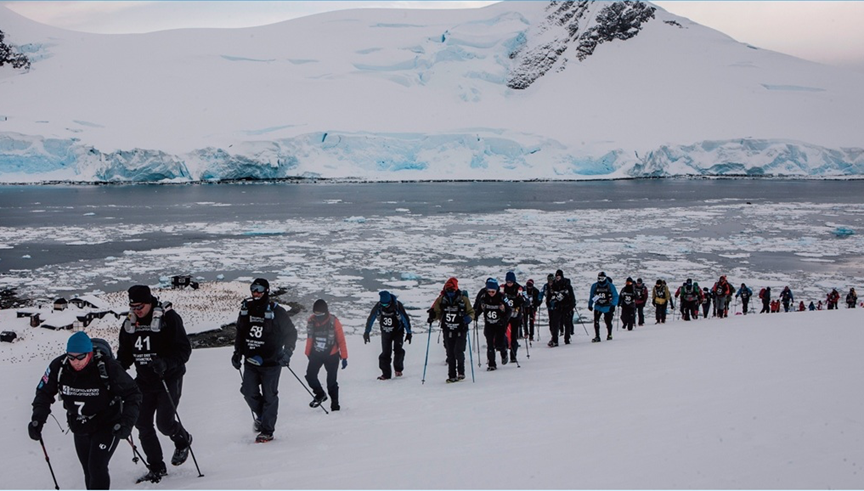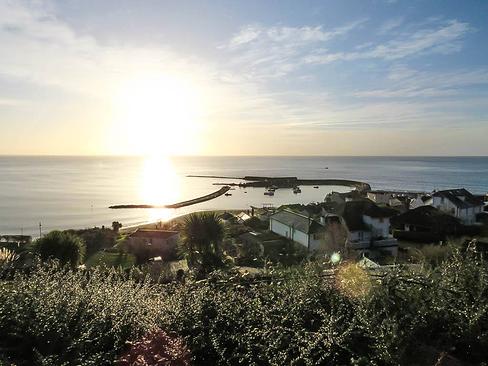Growing up, the most frequently used phrase while doing any type of outdoor activity with my father was “It gets better ahead.” Normally it was utilized when it assuredly would not get better ahead. I believe the idea was to give a psychological boost to our rapidly waning enthusiasm. I was so thankful that he taught me this useful tool that I decided to take him on back-to-back, self-supported ultras to let him experience the life altering benefits of this little mind trick!
My opportunity came last fall while my parents were visiting us in Spain from the USA. Leaving from our home we ran along the Camino de Santiago from Ponferrada to Sarria. The first day we made it to Laguna de Castilla, just over half of the 100 km plan. There we got a meal, a shower, and some sleep. The second day we finished off the second half to Sarria where our family picked us up and drove us home.
Our strategy was fairly simple. We ran when we could, walked when we were tired, drank cafe con leche whenever able, and stopped at any cafe that looked like they would allow some rough looking runners in their door. Thankfully there were many of those along the way and they fed us donuts, candy bars, and then shoved us back out the door…just like good aid station volunteers.
The traditional Camino experience would include the roughly 500 miles starting in France and ending in Santiago de Compostela. However, you can begin literally anywhere in the world. The point is that you just end in Santiago. We had two days to run, so we did two days. We have also walked as a family to Santiago, but taking small chunks each year.
What we packed:
The less you pack, the better your stories will be. Granted, the reason is because there is a high potential for misery during the activity, but the stories will be better nonetheless. I met a guy who ran the Camino, averaging a marathon and a half every day for eleven days. He had flown into Spain with his hydration pack and flew out of Spain with his hydration pack. Now, admittedly, he probably smelled like it too, but he was traveling light!
During our two day, 100 km run on the Camino De Santiago, my dad and I managed to both pack more than necessary and not enough. We planned on spending the night in an albergue and also eating along the way wherever we found food. For that reason we did not take a tent, cook stove, etc.
Here is what we took:
- Running Pack: I used my Dynafit Ultra Pro 15L pack which was perfect for what I carried.
- Poles: Dynafit Ultra Pro poles which are light and quick to assemble.
- Jacket: Rab Kinetic Alpine jacket
- Extra shirt, shorts, socks, underwear
- A silk sleep sack in case the accommodations were a little questionable.
- A handful of Tailwind hydration mix
- A handful of gummies and energy bars
- Phone and charge cord
- Money and identification
- Our Pilgrim Credentials and Camino Shell
Here you can you see the size of our packs.
If you are interested:
If you are interested in doing something similar, here are some quick suggestions:
- While there are not nearly as many albergues open right now, it is still possible to get individual rooms in hostels and other small hotels. Make sure you call ahead in this COVID19 era.
- Use the Wisely + app to know what villages are coming up, what services they have, etc.
- Choose a good time. It can be very hot from July through mid September.
- Don’t worry about carrying large quantities of water. There are plenty of places to fill up along the way.
- Depending on what section you are doing, take into account the possibility of mountain weather.
- Make sure to have your Pilgrim credentials and identification.
- Have cash for the normal drink and food purchases.
- There is an airport in Santiago, and also train and bus travel all along the Camino. Plan where you want to start and end based on getting to where you need to be.
- English is the language of the Camino, but in some of the villages you may have to be pretty flexible with that English!
- Choose which route you want to do. Each of them has its positives and negatives, but there is plenty of information out there to help you make your choice. The easiest for planning would be the French route because of its popularity.
We finished our two day run at a grocery store, eating chips and cold chicken, so I guess you could say “it got better ahead.” However, I am not sure my dad will believe me the next time I use that phrase.
If you are interested in seeing what running on the Camino De Santiago looked like for us, watch this video.
About the writer: You can read more of Seth’s musings over at sethgrotzke.com. His goal is to keep some “real” in the ultra scene and help provide a stabilising influence for the world through sarcasm.
Find out more about running the Camino de Santiago trail here





